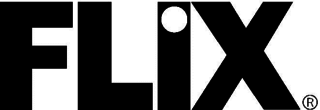Related Research Articles

Cable television is a system of delivering television programming to consumers via radio frequency (RF) signals transmitted through coaxial cables, or in more recent systems, light pulses through fibre-optic cables. This contrasts with broadcast television, in which the television signal is transmitted over-the-air by radio waves and received by a television antenna attached to the television; or satellite television, in which the television signal is transmitted over-the-air by radio waves from a communications satellite orbiting the Earth, and received by a satellite dish antenna on the roof. FM radio programming, high-speed Internet, telephone services, and similar non-television services may also be provided through these cables. Analog television was standard in the 20th century, but since the 2000s, cable systems have been upgraded to digital cable operation.

Showtime is an American premium television network and the flagship property of Showtime Networks, a sub-division of the Paramount Media Networks division of Paramount Global. Showtime's programming includes theatrically released motion pictures, original television series, boxing and mixed martial arts matches, occasional stand-up comedy specials, and made-for-TV movies.
Video on demand (VOD) is a media distribution system that allows users to access videos, television shows and films without a traditional video playback device and a typical static broadcasting schedule. In the 20th century, broadcasting in the form of over-the-air programming was the most common form of media distribution. As Internet and IPTV technologies continued to develop in the 1990s, consumers began to gravitate towards non-traditional modes of content consumption, which culminated in the arrival of VOD on televisions and personal computers.

A specialty channel can be a commercial broadcasting or non-commercial television channel which consists of television programming focused on a single genre, subject or targeted television market at a specific demographic.

Flix is an American premium cable and satellite television network owned by Showtime Networks, a subsidiary of Paramount Global operated through its Paramount Media Networks division. Its programming consists solely of theatrically released motion pictures released from the 1970s to the present day, interspersed with some films from the 1950s and 1960s.
Pay television, also known as subscription television, premium television or, when referring to an individual service, a premium channel, refers to subscription-based television services, usually provided by multichannel television providers, but also increasingly via digital terrestrial and streaming television. In the United States, subscription television began in the late 1970s and early 1980s in the form of encrypted analog over-the-air broadcast television which could be decrypted with special equipment. The concept rapidly expanded through the multi-channel transition and into the post-network era. Other parts of the world beyond the United States, such as France and Latin America have also offered encrypted analog terrestrial signals available for subscription.
Streaming television is the digital distribution of television content, such as television shows and films, as streaming media delivered over the Internet. Streaming television stands in contrast to dedicated terrestrial television delivered by over-the-air aerial systems, cable television, and/or satellite television systems.
Crave is a Canadian premium television network and streaming service owned by the Bell Media subsidiary of BCE Inc.

Home Box Office (HBO) is an American pay television network, which is the flagship property of namesake parent-subsidiary Home Box Office, Inc., itself a unit owned by Warner Bros. Discovery. The overall Home Box Office business unit is based at Warner Bros. Discovery's corporate headquarters inside 30 Hudson Yards in Manhattan's West Side district. Programming featured on the network consists primarily of theatrically released motion pictures and original television programs as well as made-for-cable movies, documentaries, occasional comedy, and concert specials, and periodic interstitial programs.
Cable television first became available in the United States in 1948. By 1989, 53 million U.S. households received cable television subscriptions, with 60 percent of all U.S. households doing so in 1992. Most cable viewers in the U.S. reside in the suburbs and tend to be middle class; cable television is less common in low income, urban, and rural areas.
Canada is served by various multichannel television services, including cable television systems, two direct-broadcast satellite providers, and various other wireline IPTV and wireless MMDS video providers.
A free preview is a stunt programming concept in which a pay television service or channel tier is exhibited without signal encryption to customers of a multichannel television provider at no cost for an extended time period.
Multichannel television in the United States has been available since at least 1948. The United States is served by multichannel television through cable television systems, direct-broadcast satellite providers, and various other wireline video providers; among the largest television providers in the U.S. are DirecTV, Altice USA, Charter Communications, Comcast, Dish Network, Verizon Communications, and Cox Communications. The Telecommunications Act of 1996 defines a multichannel video programming distributor (MVPD) as "a person such as, but not limited to, a cable operator, a multichannel multipoint distribution service, a direct broadcast satellite service, or a television receive-only satellite program distributor, who makes available for purchase, by subscribers or customers, multiple channels of video programming", where a channel is defined as a "signaling path provided by a cable television system."

A cable converter box or television converter box is an electronic tuning device that transposes/converts channels from a cable television service to an analog RF signal on a single channel, usually VHF channel 3 or 4, or to a different output for digital televisions such as HDMI.
A la carte pay television, also referred to as pick-and-pay, is a pricing model for pay television services in which customers subscribe to individual television channels. For subscription distribution services, a la carte pricing contrasts with the prevailing model of bundling, in which channels are grouped into packages that are offered on an all-or-nothing basis.

MGM+, formerly known as Epix, is an American premium cable and satellite television network owned by the MGMPlus Entertainment subsidiary of Metro-Goldwyn-Mayer (MGM), which is itself a subsidiary of Amazon MGM Studios. The channel's programming consists of recent and older theatrically released motion pictures, original television series, documentaries, and music and comedy specials.

TV Everywhere refers to a type of American subscription business model wherein access to streaming video content from a television channel requires users to "authenticate" themselves as current subscribers to the channel, via an account provided by their participating pay television provider, in order to access the content.
An over-the-top (OTT) media service is a media service offered directly to viewers via the Internet. OTT bypasses cable, broadcast, and satellite television platforms—the mediums through which companies have traditionally acted as controllers or distributors of such content. It has also been used to describe no-carrier cellphones, for which all communications are charged as data, avoiding monopolistic competition, or apps for phones that transmit data in this manner, including both those that replace other call methods and those that update software.
The distribution of cable television around the world:
Sportsnet PPV is a Canadian pay-per-view (PPV) service owned by Rogers Communications. It is the PPV service used by Rogers Cable, Cogeco Cable and Source Cable for offering out-of-market sports packages and occasionally other special events. Since October 1, 2014, Rogers and Source have also used Sportsnet PPV as their main general-interest pay-per-view provider, replacing Viewers Choice which shut down the previous evening. The service is co-branded with Rogers' sports channel Sportsnet.
References
- ↑ "What is IPTV? Here's your primer". The Globe and Mail. Retrieved 14 January 2016.
- ↑ Rodriguez, Ashley. "Streaming's live-TV bundles aren't actually saving cord-cutters money compared to cable". Quartz. Retrieved 2018-01-25.
- ↑ Maglio, Tony; Levine, Jon (2017-12-12). "Fox News Is Most-Watched Basic Cable Network in 2017". TheWrap. Retrieved 2019-07-22.
- ↑ Carter, Bill (2013-03-26). "CBS Acquires 50% Stake in Former TV Guide Network". The New York Times. ISSN 0362-4331 . Retrieved 2019-07-22.
- ↑ "2018 Year-End Cable Ranker: Fox News, MSNBC, Hallmark Channel Are Among Top Networks to Also Post Audience Growth". TVNewser . 3 January 2019. Retrieved 2019-07-22.